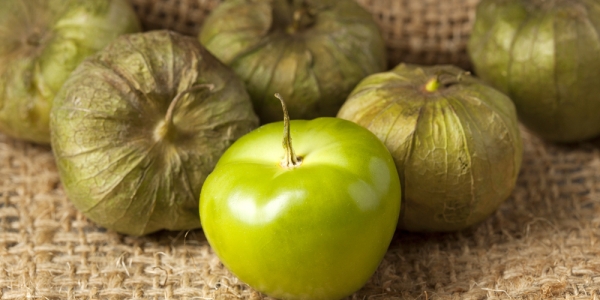Ecclesiastes 3: 1-2: For everything there is a season, and a time for every matter under heaven: a time to be born, and a time to die: a time to plant, and a time to pluck up what is planted…. [Revised Standard translation]
BIBLICAL COMMENTS
There are a number of books in the Bible that some have labeled “wisdom literature.” These books include the Book of Job, Psalms, the Book of Proverbs and Ecclesiastes. The word “Ecclesiastes” is a Latin transliteration* of the Greek translation of the Hebrew word “Koheleth.” “Koheleth” means “Gatherer” but is traditionally translated as “Teacher” or “Preacher.” See, www.wikipedia.com. In Ecclesiastes 1:1, the Kohleleth or Preacher/Teacher identifies himself as the son of David, Solomon. The “words” of the text are in the form of an autobiographical narrative. The subject matter appears to be “the meaning of life.”
According to The Koheleth, everything has a season or a time.
After considering many things about human life—birth, death, the search for wisdom, the desire for advancement, the vanity of wealth and honor, the attempts to please our appetite for things, the search for virtue and wisdom, and after much study, teaching, the Koheleth’s concludes “the whole matter” into these words:
Fear GOD, and keep HIS commandments….
Ecclesiastes 1:13. Only GOD remains the same. We can find comfort and hope in knowing that HE is the same—yesterday, today and tomorrow and that HE is in control.
*A transliteration is a conversion of a word or text from one script to the alphabet of another script.
SEASONAL EATING
Some of the best chefs at the best restaurants cook seasonally. Many chefs grow their own foods at nearby gardens where the foods can be easily harvested. One reason the best chefs cook seasonal foods is because fresh foods (seasonal foods) just taste better. Eating a fresh fruit or vegetable is also more nutritious.
Instead of eating foods that have been shipped thousands of miles away, which have to be packaged, sometimes processed and stored to prevent damage, the time from harvest to your plate can be hours or a few days as opposed to weeks or months. Moreover by eating seasonally we help support our local economy (and local farmers) and reduce our environmental “footprint” since less (transportation) fuels are used in the shipping process.
You can also find that you can stretch your dollar shopping at a local farmer’s market, especially when the market is about to close and the merchants are eager to bargain so that they don’t have to transport anything back home.
If you go to http://www.sustainabletable.org/seasonalfoodguide and click on your state, you can find a list of fruits and vegetables in season in your state in each month. For example, in California, in late October the following fruits, nuts and vegetables are in season:
VEGETABLES Artichokes , Arugula, Avocado, Beans (Green Snap), Beets, Bell Peppers, Bok Choy, Broccoli, Brussels Sprouts, Burdock, Cactus Wads, Cabbage, Cardoons, Carrots, Cauliflower, Celery, Celery Root, Chicories, Chili Pepper, Corn, Cucumbers, Edamame, Eggplant, Endive, Fennel , Garlic, Greens (collards), Kale , Kohlrabi, Leeks, Lettuce, Mushrooms , Mustard Greens, Okra, Olives, Onions, Parsnips, Peas (Snow, Snap, Pods), Pumpkin, Purslane, Radishes, Radicchio, Rhubarb, Rutabaga, Shallots, Sunchocks, Sweet Potatoes, Tomatillos, Tomatoes, Turnips, Winter Squash.
FRUIT and NUTS Apples, Asian Pears, Chestnuts, Dates, Figs, Grapefruit, Kiwi, Lemons, Melons (end of the season), Nectarines, Oranges, Pears, Peaches, Pecans, Persimmons, Pistachio, Plums, Pomegranates, Quince, Raspberries, Strawberries, Winter Citrus.
The above site not only identifies what is in season, but provides a link where you can “learn more,” just in case you have never heard of the fruit or vegetable. Often a picture is included, a brief history of the food, the nutritional value of the fruit and helpful cooking hint. For example, here’s what a Tomatillo looks like:

Tomatillos are native to Mexico. There is evidence that the Aztecs (who were known for “good eating” and who introduced chocolate, chilies and other foods) ate tomatillos. The word “Tomatillos” means “little tomato.” The papery husk around the vegetable protects the core part while it grows. Cooks often combine Tomatillos, green chili, onions and garlic. Tomatillos can also be used to make jams and used in tarts and pies. For more information go to: http://www.gracelinks.org/blog/3033/real-food-right-now-and-how-to-cook-it-tomatillos.
Going to your local farmer’s market or checking out the seasonable local produce in your local stores can be fun and add a lot of variety to your Eat Raw Wednesdays.
SOME THINGS REMAIN THE SAME---GOD
Some things change with the seasons. Singer, composer and instrumentalist Bernard Ighner wrote a song called “Everything Must Change.” In 1974 he recorded the song with Quincy Jones. In 1978, Nina Simone also recorded the song. In 2012, Quincy Jones recorded it with BeBe Winans. Each singer interprets the song differently. **
In life, change can be disorienting. Children are born, they grow up, and they become their own personalities and change. We look in the mirror, in our neighborhoods, in our communities and our churches and see change. Changes can occur in our health, our nation, and our weather.
Our eating habits change over time too—or “should” change too. We are no longer “growing teenagers.” Some of us are not “as active,” so our caloric intake may need to change.
Yet, some things remain the same and always will. GOD is ever-present. (Psalms 46) The HOLY SPIRIT still COMFORTS. (John 14:26) JESUS still SAVES. (Acts 16:31)
There really are some things you can be sure---really sure. GOD is still GOD!
Eat seasonally. Don’t be overwhelmed by change. Trust in the LORD.
Be assured and BE BLESSED!
______________________________
** In 1974 Quincy Jones and Bernard Ighner recorded “Everything Must Change.” See, http://www.youtube.com/watch?v=j8vnqp4tZco&list=RDj8vnqp4tZco. In 1978, Jazz artist Nina Simone recorded her rendition. See, http://www.youtube.com/watch?v=P9ycirYfmcY&list=RDP9ycirYfmcY. In 2012, Quincy Jones recorded the same song with BeBe Winans: http://www.youtube.com/watch?v=rlIcFvtj4XI.


